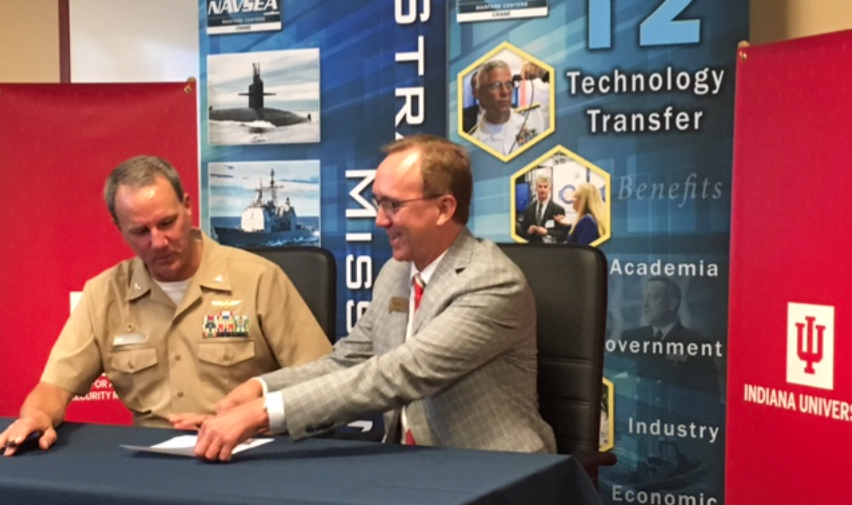
As issues involving national security and cybersecurity increasingly intersect, both university and military researchers share increasingly common ground. To maximize the benefits of work from both areas of expertise, IU’s Center for Applied Cybersecurity Research (CACR) and Naval Surface Warfare Center-Crane entered a two-year agreement on July 18 to collaborate in addressing the ever-increasing challenges involved in cybersecurity.
The pact is seen as the initial phase of a long-term partnership to addressing cybersecurity issues. As the Department of Defense undergoes a transition in the framework it uses for information security — and NSWC-Crane plays a critical role in national security — the pact offers CACR a “huge opportunity” to contribute to that effort, said Craig Jackson, CACR’s lead policy analyst.
“NSWC Crane and the CACR both recognize that cybersecurity is an inherently interdisciplinary field, and we can’t fully address the cyber problem from isolated silos of expertise,” Jackson said.
There are economic benefits as well.
“Cybersecurity and IT research are part of Indiana’s newest growth industry,” said Kirk White, IU assistant vice president and military liaison. “This agreement will strengthen the state’s position to attract and retain new projects, jobs and talent.”
****
A few days earlier on July 13, IU and NSWC-Crane announced collaboration on a $450,000 grant to be used toward improving the durability of electronics used in a range of critical U.S. Navy systems.
David Crandall, a professor at IU’s School of Informatics and Computing, received the grant from the Naval Engineering Education Consortium (NEEC) to study new ways to guarantee the integrity of electronic circuits. Through work with U.S. Navy engineers at NSWC-Crane, Crandall looks to apply the concept of “computer vision” to improve quality control of such circuitry, which is used in key areas of operations such as communication and navigation.

Computer vision uses machine learning to “train” machines to create algorithms that recognize patterns such as faces, scenes or actions. The IU-NSWC Crane project seeks to apply this ability to spotting microscopic flaws in circuits and semiconductors.
“Today’s military employs devices with immensely complicated integrated circuits whose logic gates are less than 25 nanometers wide and feature upwards of 20 billion individual transistors,” said Robert Templeman, lead engineer on the project at NSWC Crane and a graduate of the IU School of Informatics and Computing. “What once could be inspected by the naked eye, and later optical magnification, now requires state-of-the-art instruments that create images from sophisticated imaging technology, challenging the limits of human inspection.”
Additionally, the NEEC grant further strengthens ties between IU faculty and students and Crane researchers, said Kirk White, assistant vice president and military liaison for IU. During the three-year project, IU students — ranging from undergrads to doctoral-level — gain the chance to work with engineers at NSWC-Crane.
“Aside from our work on radiation effects, it is the most significant grant we have received in our efforts to expand partnerships with NSWC Crane Division,” White said. “It is a great example of how perseverance can be worth the effort.”
More information on the cybersecurity agreement is available here.
Read more about the electronics grant here.
Leave a Reply